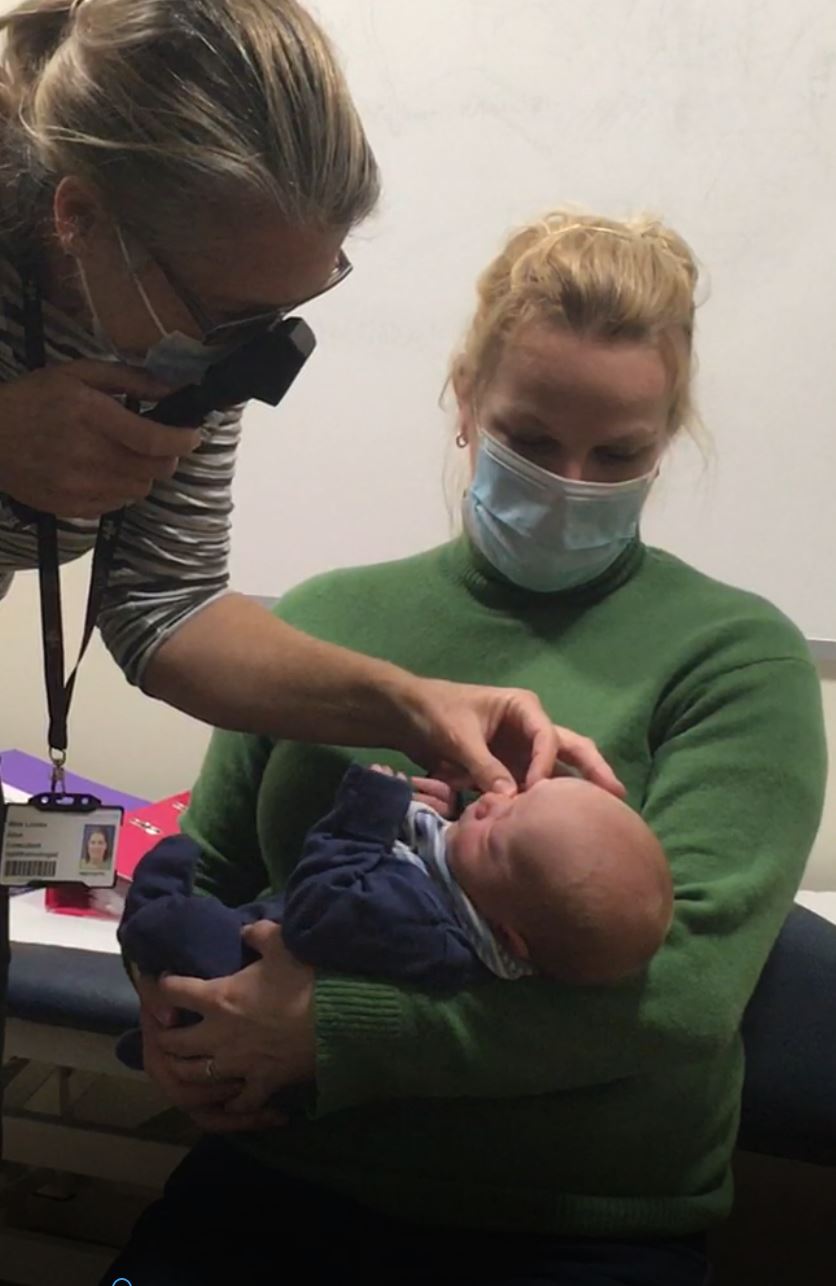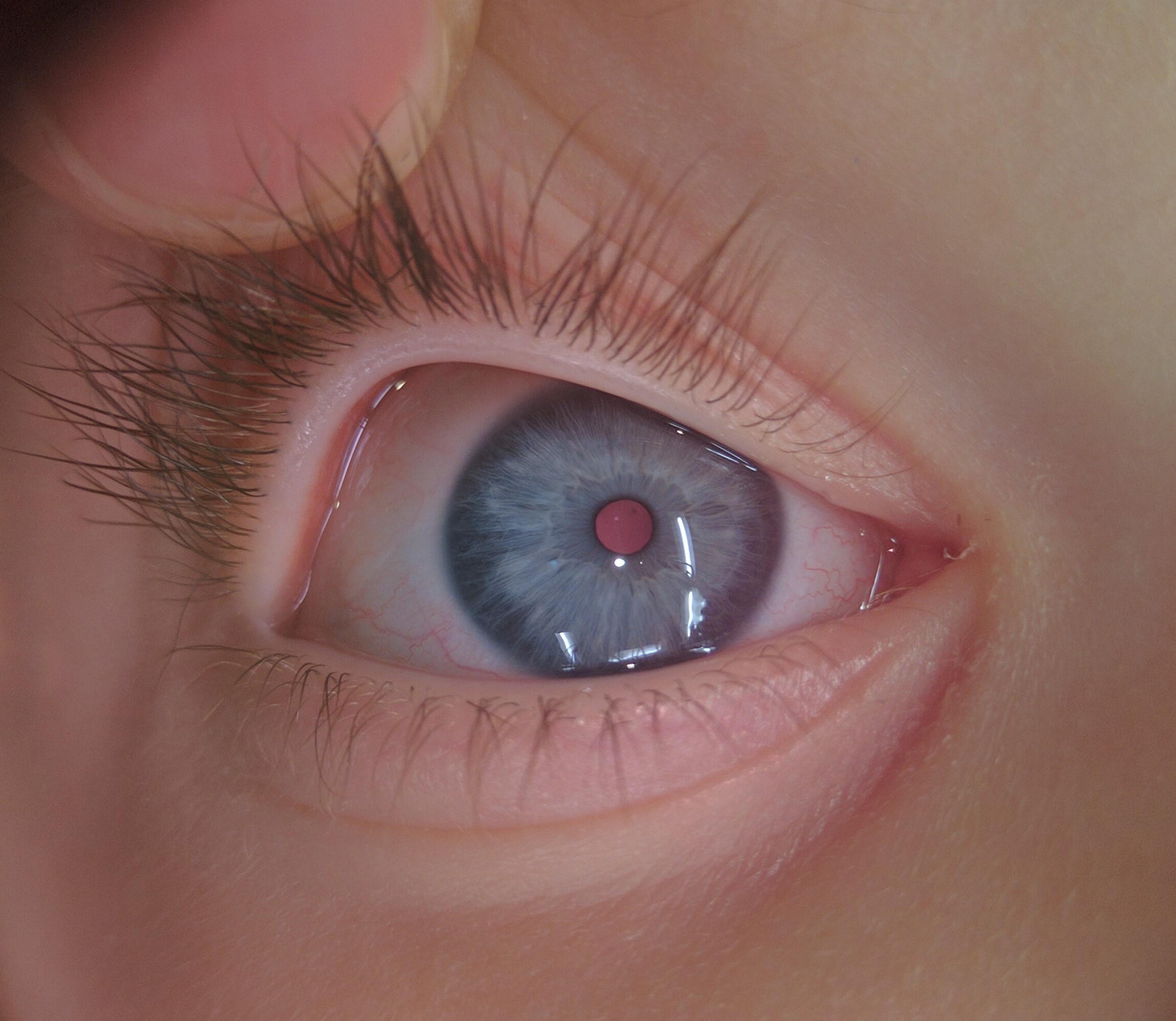 WHAT IS SCREENING?
WHAT IS SCREENING?
Screening tests are investigations carried out to check for potential health problems in people who do not have any obvious symptoms of disease. All children born in the UK are examined for cataract twice within the first 8 weeks of life as part of the Newborn and Infant Physical Examination (NIPE).
SCREENING FOR CATARACT
A midwife or doctor uses a medical eye torch (ophthalmoscope) to look at the reflection of a bright white beam of light from the back of the eye. It’s not easy because the light causes the pupils to constrict and the baby to forcefully shut their eyes.
 The picture on the left shows a normal eye, in which there is a normal red reflection (red-reflex) from the back of the eye, the same “red eye” often seen in flash photos.
The picture on the left shows a normal eye, in which there is a normal red reflection (red-reflex) from the back of the eye, the same “red eye” often seen in flash photos.
 A cataract will cause a shadow or completely block out the red-reflex. In the picture on the right, there is a cataract - seen as a dark area in the centre of the pupil.
If there is concern about the red-reflex appearance, the baby will be examined by an ophthalmologist (a doctor specialising in eye conditions) within 2 weeks.
A cataract will cause a shadow or completely block out the red-reflex. In the picture on the right, there is a cataract - seen as a dark area in the centre of the pupil.
If there is concern about the red-reflex appearance, the baby will be examined by an ophthalmologist (a doctor specialising in eye conditions) within 2 weeks.
WHAT ARE THE PROBLEMS WITH THIS METHOD OF SCREENING?
Two types of screening error occur more frequently than we would like:
This is particularly likely to occur when screening babies from ethnic minorities, who may have darker eye pigmentation.
Two types of screening error occur more frequently than we would like:
- failure to detect a cataract in an affected child (false negative), which may delay sight saving surgery
- or thinking there may be a cataract where there isn’t one (false positive)
This is particularly likely to occur when screening babies from ethnic minorities, who may have darker eye pigmentation.
PARENTS' EXPERIENCE OF SCREENING
Half of the 145 families in our parent involvement group reported that their babies’ cataracts were not detected at screening and felt that their child’s vision had suffered as a result. Others have described “days of total panic” after a false positive screening test. Some of their experiences are shared are shared in this news segment, together with a demonstration of the new digital imaging device in use (ITV Anglia News February 2019).
Half of the 145 families in our parent involvement group reported that their babies’ cataracts were not detected at screening and felt that their child’s vision had suffered as a result. Others have described “days of total panic” after a false positive screening test. Some of their experiences are shared are shared in this news segment, together with a demonstration of the new digital imaging device in use (ITV Anglia News February 2019).
